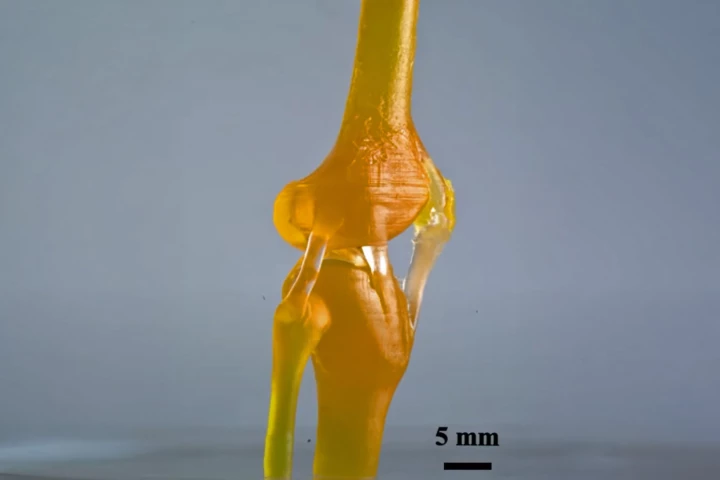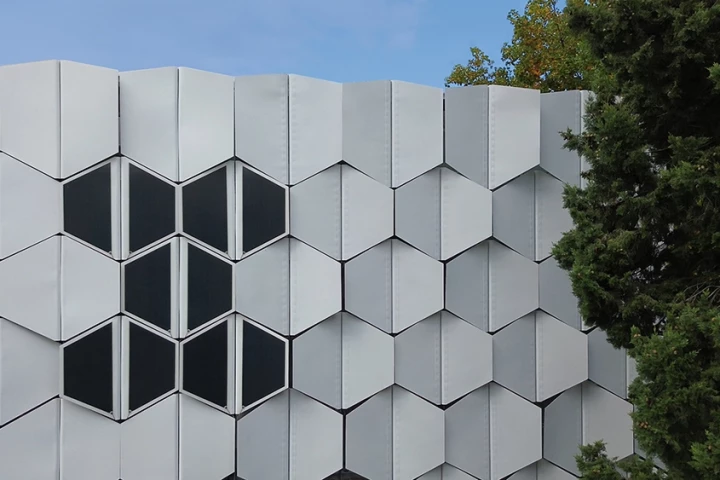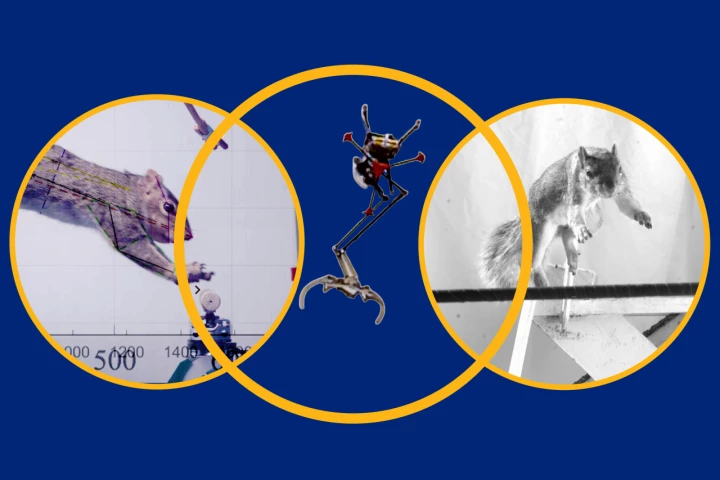Biomimicry
-
If an object that's composed of two types of material is going to fail, the break will usually occur at the interface where the two meet. A new type of light-activated 3D printing resin addresses that problem, by gradually morphing from hard to soft states within a single object.
-
Nobody likes buildings that are too hot in the summer or too cold in the winter. That's where the FlectoLine facade comes in, as it uses two bio-inspired mechanisms to regulate how much solar thermal energy gets through a building's windows.
-
Quadruped "robot dogs" may move quite a bit like their canine counterparts on land, but they're not nearly as good at swimming (although some can walk underwater). Such is not the case with a new mini-dog-bot, however, which is an expert at doing the dog-paddle.
-
Even the nimblest of quadcopters still struggle to halt their lateral momentum when moving fast, limiting their maneuverability. An experimental drone addresses that problem in a bio-inspired fashion, by extending flying-squirrel-like membranous wings as needed.
-
Even if you've built one of the world's best insect-inspired micro air vehicles, it won't be that useful if it can't stick a landing. That's why Harvard scientists have now given their RoboBee a set of long, jointed legs like those of the crane fly.
-
Oyster mushrooms and bits of bamboo sound more at home on a Chinese menu than stuck to the wall, but scientists have used this mix to make aesthetically pleasing tiles with bumps and textures that help regulate temperature much like elephant skin does.
-
I love me a bioinspired robot that pulls off challenging feats with cues from nature. Researchers have shown off the one-legged Salto bot mimic the way squirrels leap effortlessly between precarious branches and stick the landing on the first attempt.
-
Deep-sea sponges have a secret: their light lattice-like forms are astonishingly stiff and strong. Inspired by these creatures, RMIT researchers have developed a new structure to make significantly stronger materials for more durable buildings.
-
You may not know what a springtail is but man, those little things can jump! Scientists have now copied the creatures' jumping mechanism in a small robot that could one day explore places that people can't go.
-
It’s hard to get glue to work underwater – unless you’re a mussel. Scientists have now created a new adhesive that combines the stickiness of mussel’s natural glue with the slimy, germ-repelling nature of mucus.
-
If a robot is being used to gather data in sensitive aquatic environments, it shouldn't have a whirring propeller that could harm wildlife or get caught in weeds. A new bot addresses that issue by utilizing a swimming mechanism inspired by flatworms.
-
You may think that if a species died out millions of years ago, its design would be too old to have any applications in our technology. A new analysis of pterosaur bones, however, suggests that they could inspire lighter, stronger aircraft materials.
Load More











